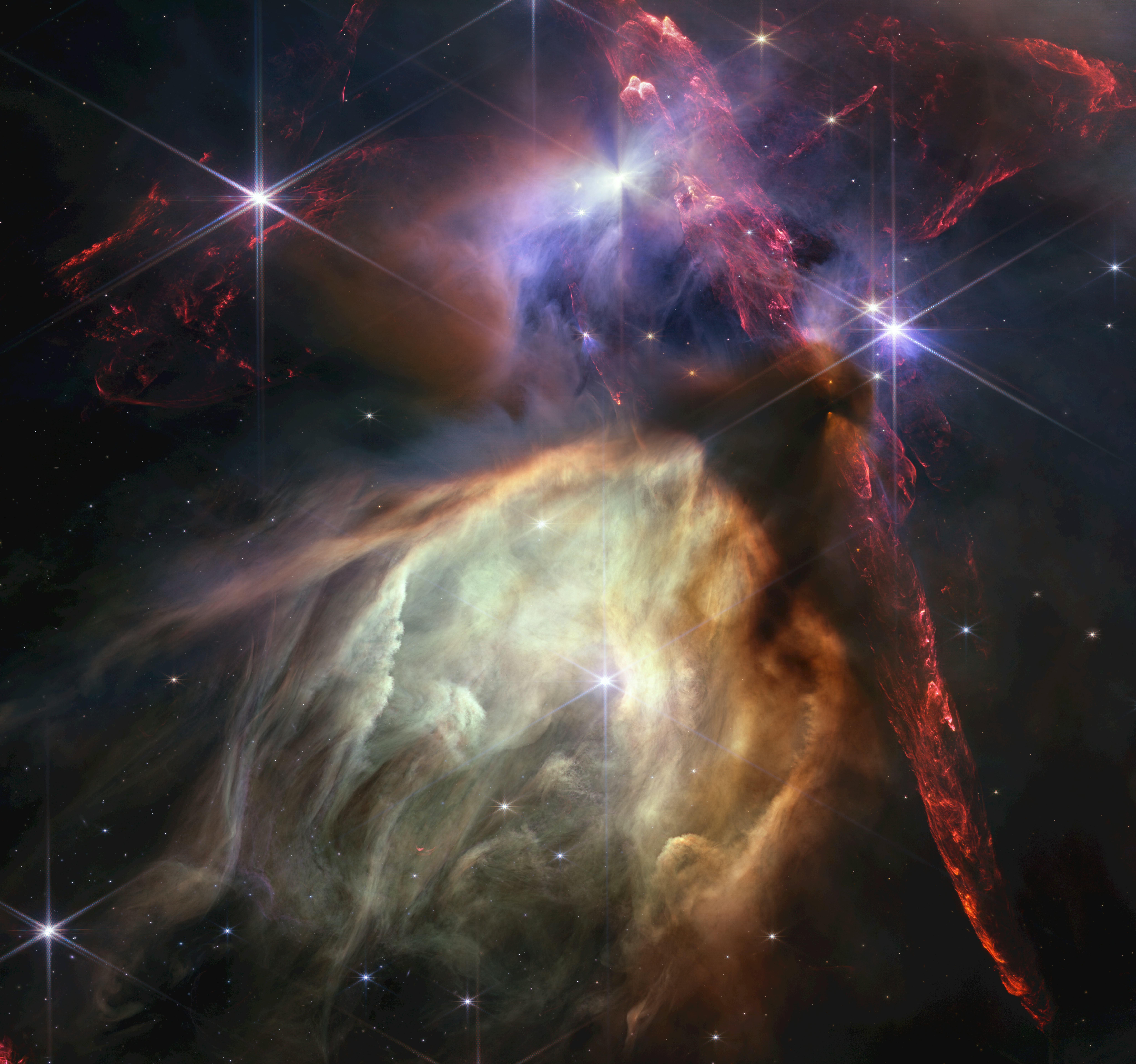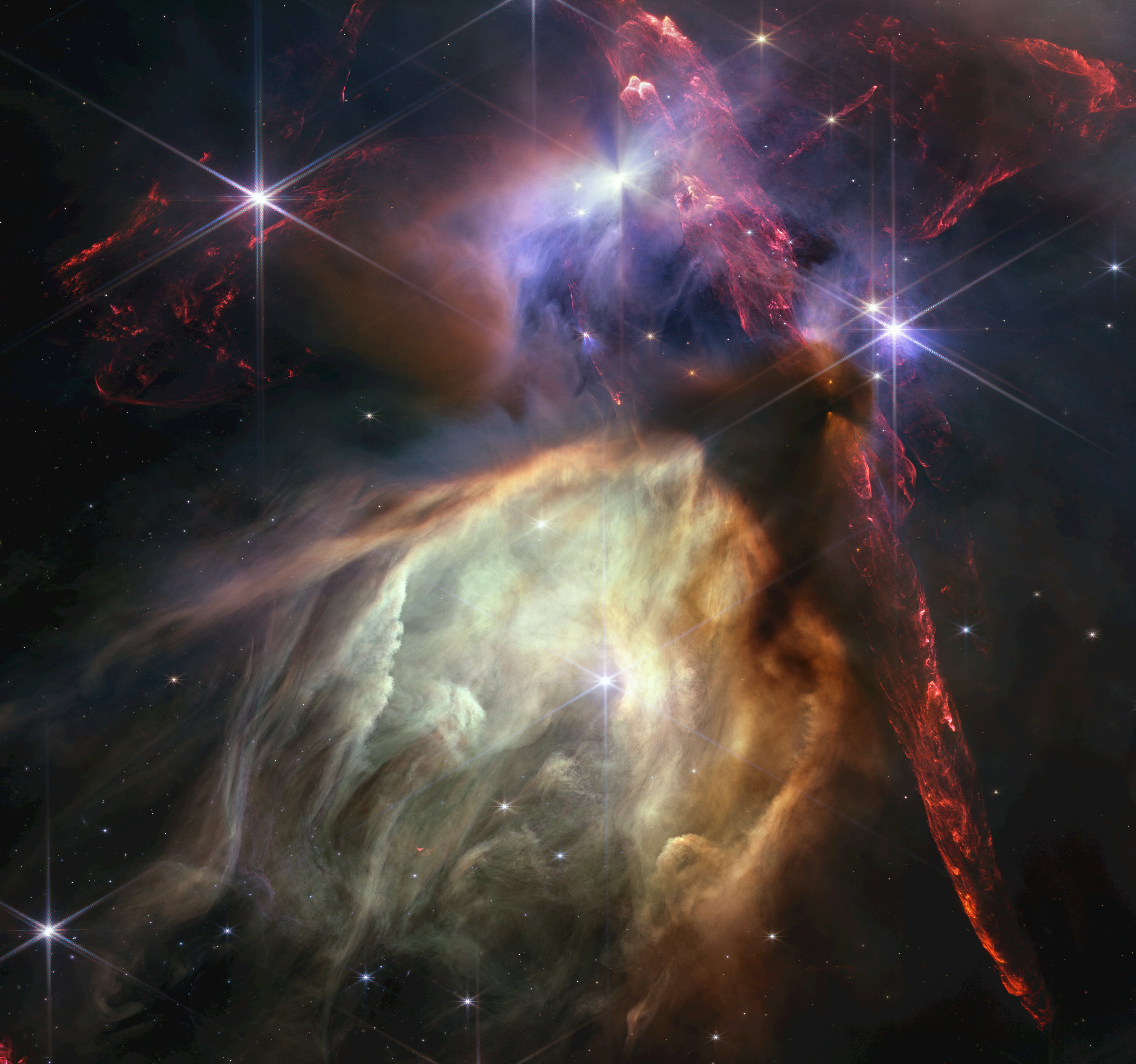
The James Webb Space Telescope (JWST), the world’s newest and most powerful telescope yet, is celebrating the first anniversary of its first image release in grand style with a dramatic close-up of stars being born.
The Rho Ophiuchi cloud complex is the same kind of small stellar factory that once produced our Sun. In cosmic terms, it's quiet and out of the way, at least compared to the gargantuan nebulae where huge clusters of massive blue-white stars spawn. And it’s the closest star-forming region to Earth, just 390 light years away. JWST recently captured this detailed portrait of new stars blazing amid pillars of gas and dust.
"Our own Sun experienced a phase like this long ago, and now we have the technology to see the beginning of another star's story," says Klaus Pontopiddan, JWST project scientist at the Space Telescope Science Institute, in an announcement.

The darker areas in the image are the densest clouds of interstellar dust. Hidden in their depths, growing protostars are feeding on gas and dust. Eventually, they’ll grow massive enough to start squashing hydrogen atoms together at their cores, kickstarting the thermonuclear reaction that fuels a star. If you look closely, you’ll spot a few stars with faint shadows around or across them; those are disks of gas and dust that will eventually coalesce into systems of exoplanets — some of which have the potential, in a few billion years, to become homes for alien life.
Across the top of the image, clouds of hydrogen gas glow deep red. Young stars’ magnetic fields can grab material from the disks of gas and dust around them, then fling that material out into space at tremendous speeds. Those jets of fast-moving gas slam into the surrounding cloud of gas, heating it and making it glow with infrared light. The processing team that turned raw JWST data into the image chose visible colors to represent infrared wavelengths that our eyes can’t see — in this case, deep ruby red.
Most of the roughly 50 stars in the clouds of Rho Ophiuchi are about the size of our Sun or even smaller. But one, dubbed S1, is considerably more massive, and it’s carved itself a vast cavern in the dense gas of the nebula; the massive young star’s powerful stellar winds have eroded away the less dense parts of the cloud, clearing out open space around it. The gas around S1 glows in pale yellows, unlike the red of the hydrogen clouds nearby, because this patch of the nebula is mostly hydrocarbon gas.







